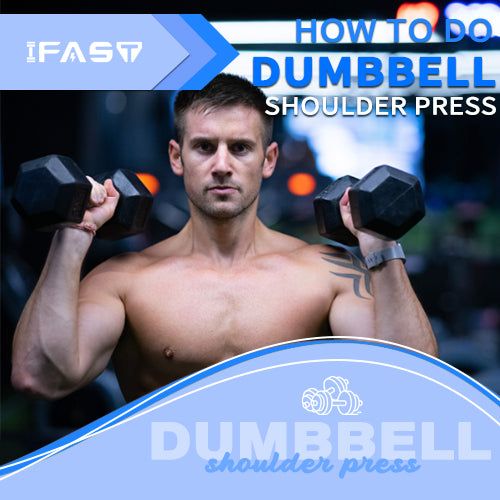LAT Pulldown is one of the most classic and popular compounds back exercises; it is mainly aimed at training and strengthening the latissimus dorsi, thereby extending the width of the back and creating a sexy body shape with a wide back and a narrow waist. At the same time, it can also stimulate the trapezius, rhomboid, and biceps muscles of the back to a certain extent, which also has a particularly positive sign for the overall upper limb shape and strength improvement.
How to do a LAT pulldown
1.Shoulder sink first, then pull down
In a high pulldown, if you want to make your back feel strong, you must first do the action of sinking your shoulders. Many people just repeat the pulldown action in training, but they don't have shoulders. Sinking the shoulders means stretching out our necks and pressing our shoulders down. There are two situations in the specific operation. The first situation is to keep the shoulders down the whole time, which will be safer.
It is recommended that novices adopt a full-length shoulder-shoulder state when doing high pulldowns, which can improve back contraction and prevent shoulder strain. People with specific experience will relax their shoulders when pulling down from an elevated position, which will stimulate the back muscles better. However, when pulling down, you must first sink your shoulders and then pull down, and do not mess up the sequence. Otherwise, it will cause serious arm compensation and affect the effect of back training.
2.The more comprehensive the grip distance between the hands, the more the elbows should be opened outwards
When pulling down from a high position, some people suggest that the elbows are ahead, and others recommend that the elbows be opened outwards. Generally speaking, this is not fixed, depending on the distance between our hands.
The close grip LAT pulldown is aimed at the thickness of our upper back, and the back squeeze will be stronger. When doing a narrow high pulldown, the elbows should be moved forward, which can better squeeze our back muscles and make the back line more beautiful. The narrow-pitch high pulldown can better carve the back line, but it is not suitable for challenging the weight.
The wide grip pulldown has a better weight-bearing capacity. This action can help us lift the weight of the back training and make our backs wider simultaneously. However, when you pull down from a wide and high position, the elbow cannot be buckled inward, not only because the inner buckle will reduce the stimulation of the back muscles but also because the inner buckle will cause accumulated injury to the elbow joint. If the elbows are banging, it is because the elbows are not opened outwards, and the wide-spaced high pulldown elbows must be opened outwards.
Read More: Close grip vs wide grip LAT pulldown
Benefits of LAT pulldown
This exercise targets the latissimus dorsi commonly referred to as the "lats," which are muscles located under the armpits and extending down the back. By isolating the back muscles with this exercise, you can focus specifically on them without straining the biceps or triceps.
It's essential to work your back muscles to help maintain proper posture and ease pulling movements such as opening doors, starting a lawn mower, swimming, and even doing pull-ups. Having solid lats may even help relieve some types of back pain.
LAT pulldown alternative
1.Wide grip LAT pulldown
If your main goal is to increase your back width, use the wide-grip high pulldown, which works better in addition to stimulating the biceps, forearms, triceps, rotator cuff, and rear deltoid. Teres major and upper latissimus dorsi.
One of the most significant benefits of this move is that it improves pulldown strength. Be sure to squeeze and contract your shoulder blades to maximize muscle activation, and avoid relying on inertia to complete the movement. Don't use a too wide grip, though, as this will reduce the range of motion and increase the risk of injury.
2.LAT pulldown behind the neck
This variation can put less stress on the shoulders, but it's probably one of the best exercises for a daily back. The stroke of the movement will result in more muscular muscle contractions, which will better stimulate the muscles. Make sure the action is not out of shape and do it with a lightweight. If you don't have shoulder mobility issues, you can get the most out of your back.
3.V bar pulls down
The V pulldown can focus on stimulating the middle of the back while also training the latissimus dorsi. Training these muscles provides core support and improves core stability and athletic performance.
Please put on the V-bar and slowly pull the weight down with an opposite grip until it touches the middle of the chest, which will cause the back muscles to feel a muscular contraction. Lean back to stimulate your back better and complete the movement. Also, stretch your muscles as much as possible at the highest point of the action.
4.Reverse grip LAT Pulldown
This variation can effectively stimulate the muscles from the lower lats to the waist. Using a narrow grip, grab the wide bar with your backhand, keeping your chest up and your lower back slightly arched as the bar is pulled down to your wardrobe. The tighter the grip is, the more the muscles in the middle of the back will be stimulated.
Backhand narrow-gap high pulldown, because the shoulder joint and scapula can complete a more extensive range of motion, stimulate more latissimus dorsi muscle fibers, and because the trapezius and biceps will also participate, it can increase the stability of the shoulder joint.
5.Single arm LAT pulldown
Single-arm movements are the way to go when it comes to improving muscle feel and maximizing muscle contraction. Towards the end of the workout, add a few sets of light single-arm pulldowns.
Are you doing it right? Pulling down from a high position seems simple, but it is not an easy action!
Control the weight at a slower pace with each movement, and hold it at the bottom for a few seconds before returning to the top. Squeeze your elbows to your side to contract the muscles as you pull the handle down. Don't fully straighten your arms when you put the weight back on to keep the muscles under tension.
5 Common Mistakes
Change them to really pull out the thick and powerful V-shaped inverted triangle back! Although, as a fixed equipment training, the essentials of the high-position pulldown are not complicated, many small partners will make this and that kind of mistake when practicing, which greatly affects the training effect. Therefore, below we summarize the five most common, high-frequency high pulldown errors for you.
1.Use the strength of the lower back

First of all, when practicing high pulldowns, many people will mistakenly use the strength of the lower back muscles to pull down the load; this will cause the upper body to appear in an apparent front-to-back swaying posture. As a result, the force of the target muscle, the latissimus dorsi, is extensively dispersed and weakened, and the result can be imagined.

To concentrate the strength on the latissimus dorsi and exert the best back training effect of the high-position pulldown, first lean back slightly before the movement; and pay attention to the whole set of pulldowns and load-bearing process; always keep the upper body fixed. Maintain this position to ensure the total contraction and extension of the lats for the most intense stimulation.
2.Strong shoulders

In addition, when practicing high-level pulldowns, pulling down the weight with the shoulders high will mobilize the upper trapezius and rear deltoid muscles around the shoulders to exert great force, which will also greatly weaken the training effect of the latissimus dorsi, and it is easy to cause shoulders. Joint pain and discomfort.

The correct exercise method is: while flexing the elbows and pulling down the weight, press down and gather the scapulae on both sides; ensure that the shoulders are extended downwards, thereby inhibiting the dominant force of the upper trapezius and rear deltoid, and effectively avoiding the shoulders occurrence of injuries.
3..Excessive abduction of the elbows

When bending the elbows and pulling down, if the elbows on both sides are overextended, the strength will be mainly concentrated on the shoulder and arm muscles, which will not only significantly affect the effect of back training but also easily put a lot of extra pressure on the shoulder and elbow joints, causing Illness and sickness!

To make sure you focus your back muscles efficiently and safely, be sure to keep them close to your side as you bend your elbows and pull them down; pay attention to using your elbows to guide the pull, not your hands, so as to maximize the mobilization of the latissimus dorsi muscle, pull out a fit and stylish inverted triangle back!
4.Pull down to the front of the body, under the chest

"Pull the horizontal bar significantly below the chest, and obviously in front of the upper body" is a mistake many beginners are particularly prone to make. In this way, the main force is the arms and chest muscles, not the back muscles you want to train!

Suppose you want to really mobilize the latissimus dorsi to dominate the force. In that case, you should emphasize maintaining an almost vertical pulldown trajectory and pull the horizontal bar close to the upper chest!
5.Movement is too fast-paced and lacks control

No matter which fitness movement is practiced, maintaining an appropriately slow and controlled movement rhythm can ensure sufficient muscle stress time to promote efficient growth and improvement, and high-position pulldown is no exception!

However, in actual practice, many people are prone to act too fast and make mistakes without control. Especially in the eccentric force stage of extending the arm and sending the weight, let the importance control the rhythm; this will weaken the overall muscle training and increase the effect!
Then to ensure the strong growth of the latissimus dorsi, usually in the concentric force stage of the flexion and pulldown, the movement can be completed quickly and explosively, while in the eccentric force stage of extending the arm, it is necessary to consciously slow down the rhythm moderately. To get the best lifting effect!


